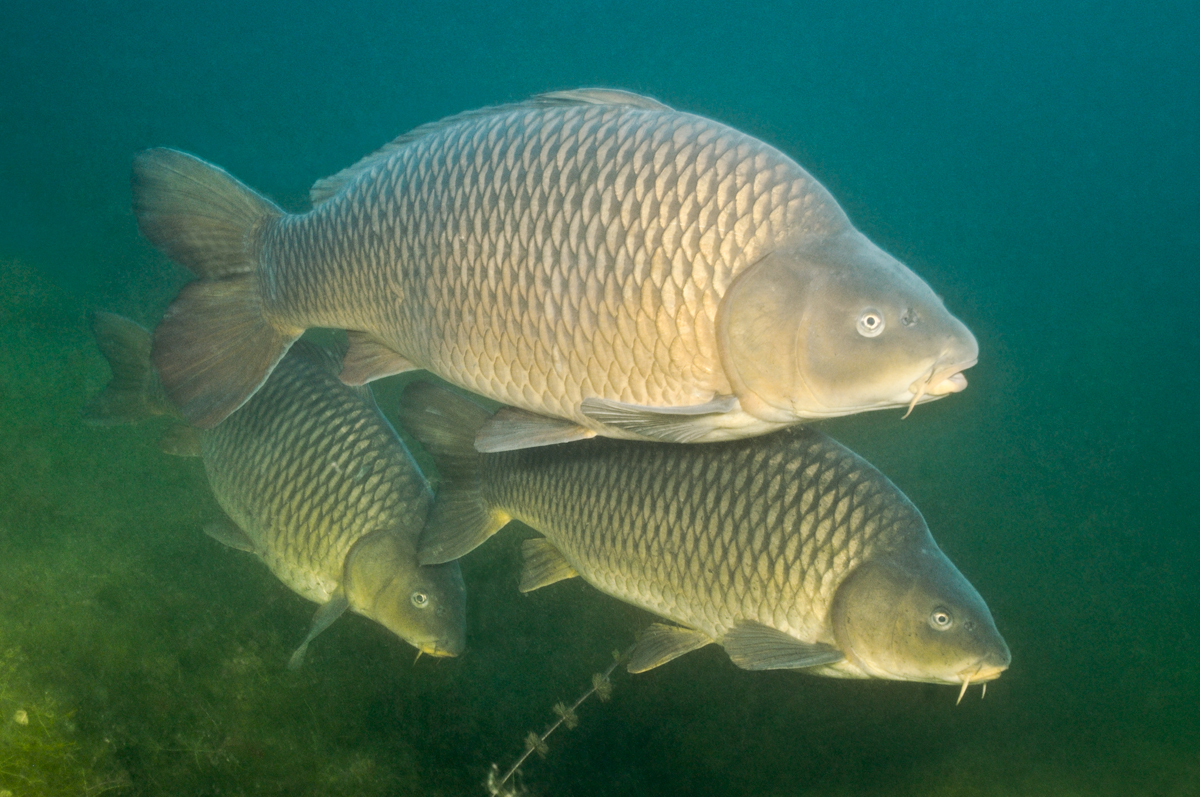

De Europese karper (Cyprinus carpio carpio) is herkenbaar aan de vier baarddraden, twee korte op de bovenlip, twee lange in de mondhoeken. Ze hebben een lange rugvin en zijn beige tot bruin. In de natuur kunnen ze 30-40 jaar oud worden en zijn dan 1.20 meter groot. De Europese karper vertegenwoordigt de wilde en gekweekte vormen ten westen van de Kaspische zee. Ten oosten van de Kaspische zee komt een tweede soort voor, de oostelijke karper (Cyprinus carpio haemetopterus).
De Latijnse naamgeving, ze beginnen biede met Cyprinus carpio geeft al aan dat de soorten zeer nauw verwant zijn, ze zijn dan ook nauwelijks van elkaar te onderscheiden. De Japanse koi (Cyprinus carpio rubrofuscus) is een kweekvorm van weer een andere soort oostelijke karpers. Inmiddels zwemmen er ook al kruisingen tussen de oostelijke en westelijke vorm rond. Leerkarper, spiegelkarper, goudkarper enz. is allemaal Europese karper (Cyprinus carpio carpio). Het zijn dus geen andere soorten maar hebben alleen een andere verschijningsvorm. Wel zijn er nog andere soorten die in het Nederlands ook karper genoemd worden, b.v. graskarper (Ctenopharyngodon idella), grootkopkarper (Hypophthalmichthys nobilis), en zilverkarper (Hypophthalmichthys molitrix). De goudvis (Carassius auratus) is geen kweekvorm van de karper. Hij werd oorspronkelijk in China en Japan gekweekt als goudkleurige variëteit van de giebel (Carassius gibelio). Omdat de goudvis een kweekvorm is en geen aparte soort zou hij eigenlijk niet eens een eigen Latijnse naam mogen hebben maar dat is weer een ander verhaal.
De karper is in Nederland inmiddels ingeburgerd. D.w.z. dat hij van nature niet in Nederland voorkomt maar wel al heel lang in Nederland is. Aangenomen wordt dat het oorspronkelijke leefgebied rond de Kaspische zee ligt. De Romeinen haalden de karpers naar Italië voor de kweek. Daarna zorgden monniken voor een verdere verspreiding over heel Europa. Vanaf de 14e eeuw werd de karper als consumptievis in veel kloostervijvers gehouden. Het is ook mogelijk dat de karper zich natuurlijk verspreidt heeft via het Rijnstroomgebied. Dit wordt echter weer tegengesproken omdat de watertemperatuur te laag zou zijn voor succesvolle voortplanting. Hoe dan ook, de wetenschap weet niet of de Nederlandse karpers nakomelingen zijn van echte wilde karpers of van verwilderde karpers. Helaas zal dat altijd zo blijven omdat er nergens meer karpers leven waarvan met zekerheid te zeggen is dat het echte wilde karpers zijn.
In Nederland is het voortplantingssucces van de karper zeer gering ten gevolge van lage watertemperaturen. Door het geringe voortplantingssucces worden ze veelvuldig uitgezet.omdat hij door sportvissers zeer gewaardeerd wordt. De karpers die in de Boschmolenplas leven zijn aan duikers gewend. Op een zonnige zomerdag zwemmen ze vaak ondiep rustig tussen de duikers rond. Voor duikers altijd weer een van de hoogtepunten van de duik.

Tekst en Foto’s Silvia Waajen
The European carp (Cyprinus carpio carpio) is recognizable at the four beard wires, two short ones at the upper lip, two long ones at the corner of the mouth. They have a long dorsal fin and are beige to brown. In nature they can live up to 30-40 years and then they are 1.20 meters long. The European carp represents the wild and cultivated forms to the west of the Caspian sea. Eastern of the Caspian sea there is a second species, the eastern carp, (Cyprinus carpio haemetopterus). The Latin name, they both start with Cyprinus carpio, already says that the species are very close related to each other. Therefore it’s very hard to distinguish the species from each other. The Japanese koi is a cultivated form of yet another species of eastern carp (Cyprinus carpio rubrofuscus). Meanwhile crossbreds between eastern and western carp are swimming around. Leather carp, mirror carp, gold carp etc. are all European carp (Cyprinus carpio carpio). These aren’t other species but have only different appearances. There are other species who are also called carp in Dutch. For example, grass carp (Ctenopharyngodon idella), big head carp (Hypophthalmichthys nobilis) and silver carp (Hypopthalmichthys mollitrix). The goldfish (Carassius auratus) isn’t a cultivated form of carp. Originally it was cultivated in China and Japan as a gold coloured form of gibel carp (Carassius gibelio). Because the goldfish is a cultivated form and not a species it shouldn’t even have an own Latin name but that’s another story.
Meanwhile the carp is established in the Netherlands. This means that they originally didn’t occur here but by now living for a very long time in the Netherlands. It is presumed that the originally living area was around the Caspian sea. The Romans took the carps to Italy for cultivation. After that monks took care of further spreading throughout Europe. By the 14th century carp became cultivated as a fish for consumption. There is also a possibility that carp naturally spread through the basin of the Rhine. However this is questioned because the water temperature would be too low for successful reproduction. Anyway, scientists don’t know if the Dutch carp is offspring from real wild carp or released cultivated carp. Unfortunately this will ever stay this way because presently there are nowhere carps living of which can be said that they are really wild carps.
In the Netherlands the reproduction success is very small due to the low water temperatures. The carp needs water temperatures from 18 to 22 degrees for spawning. Due to the very small reproduction success carp is often released into the wild because sports fishermen appreciate them very much. The carps living in the Boschmolenplas are used to divers. On a sunny summer day they often swim in the shallows calmly between the divers. For divers always again one of the highlights of the dive.
Zorgeloos duiken en snorkelen begint bij Scuba Adventures Europe. Wij helpen jou de onderwaterwereld te ontdekken met een duikuitrusting die naadloos aansluit op jouw wensen en behoeften.
In onze online en offline duikwinkels vind je als duiker alle benodigdheden om van iedere duik een onvergetelijke ervaring te maken.